Photos from the archives and readers like you.
Tree’s company
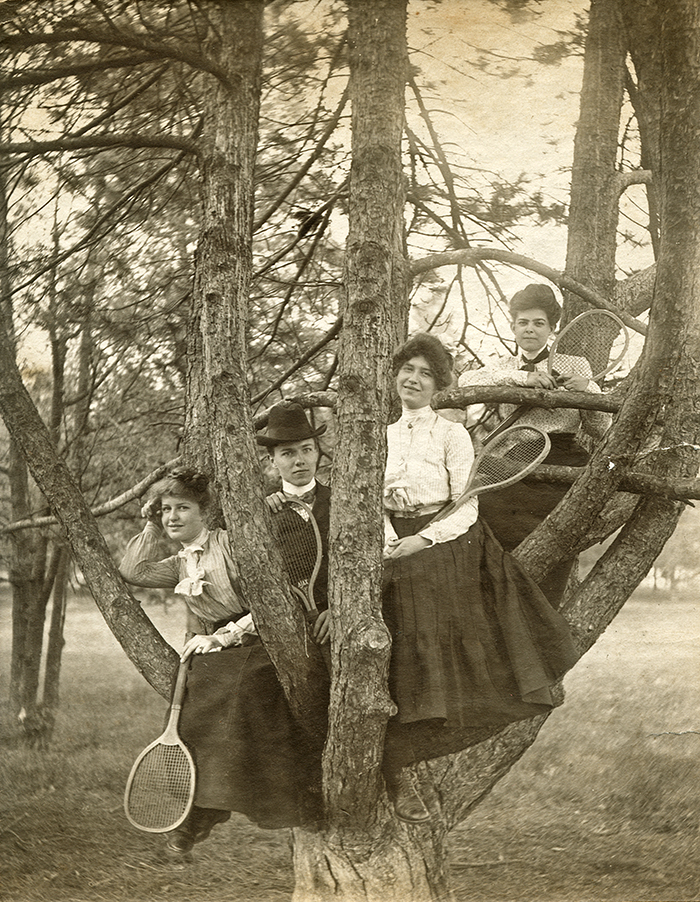
Tennis players take their game to new heights in July 1903, the same year the University began providing formal tennis instruction to women. (UChicago Photographic Archive, apf4-00914, Hanna Holborn Gray Special Collections Research Center, University of Chicago Library)
Home room
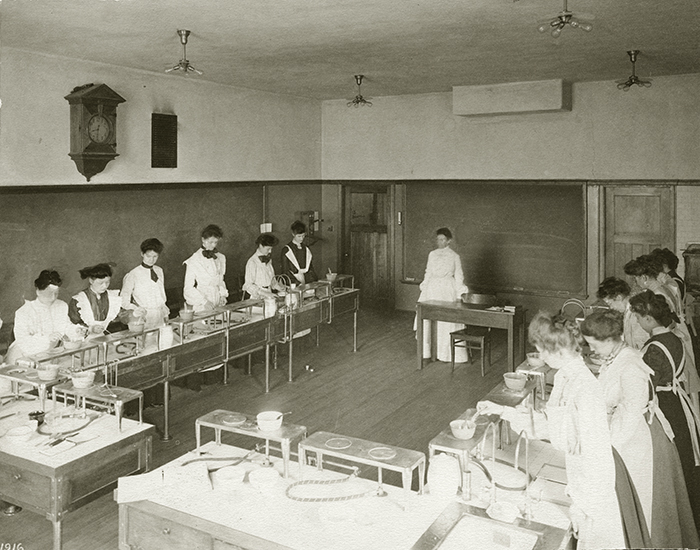
Students in a photo marked 1916 take a chemistry class as part of their home economics training. The domain of dean of women (1895–1925) Marion Talbot, home economics involved applying science and social science to domestic life, with subjects including chemistry and food chemistry, bacteriology, sanitation, sociology, and child development. It was a popular major for women in the first decades of the University, and in 1904 the University established the Department of Household Administration dedicated to this field of study. Many alumnae of the department went on to work as educators in Chicago and beyond. (UChicago Photographic Archive, apf4-01845, Hanna Holborn Gray Special Collections Research Center, University of Chicago Library)
Lesson plants
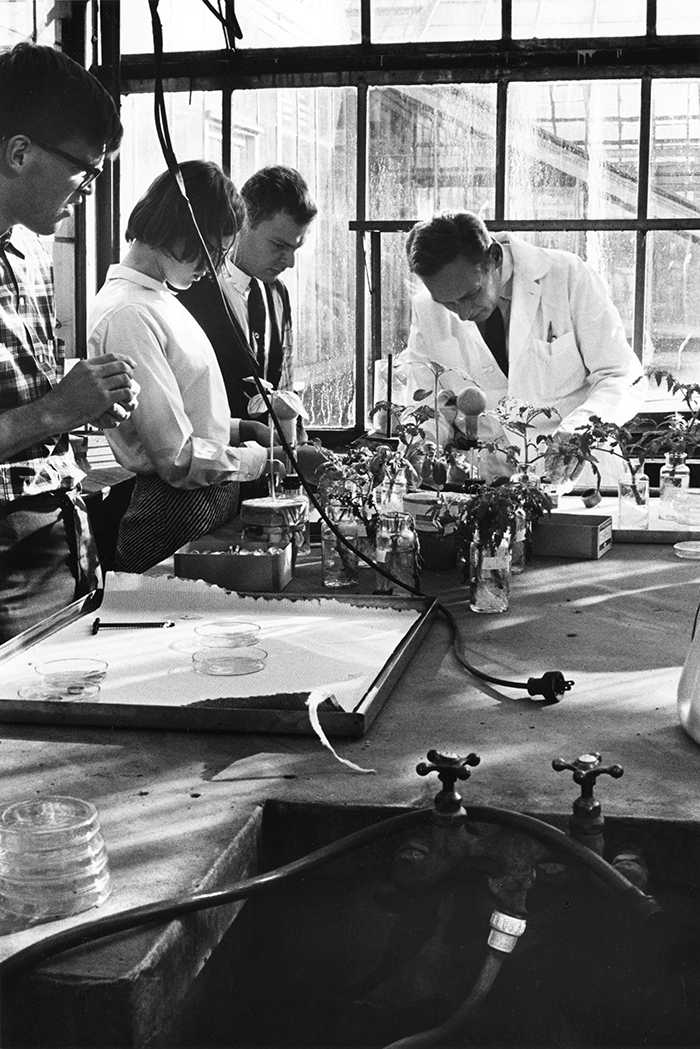
Students get hands-on experience with plant specimens in 1965 under the guidance of botany professor Lawrence Bogorad, SB’42, PhD’49 (right). Born in Tashkent, in present-day Uzbekistan, Bogorad immigrated to the United States as a baby. A US Army veteran who served during World War II, he was a pioneer in the study of photosynthesis and plant genetics who taught at UChicago from 1948 to 1951 and from 1953 to 1967, when he left to take a professorship at Harvard. Bogorad served as president of the American Association for the Advancement of Science and the American Society of Plant Physiologists. He died in 2003 at age 82. (Photography by Virginia Weissman, UChicago Photographic Archive, apf1-09307, Hanna Holborn Gray Special Collections Research Center, University of Chicago Library)
In the Wright light
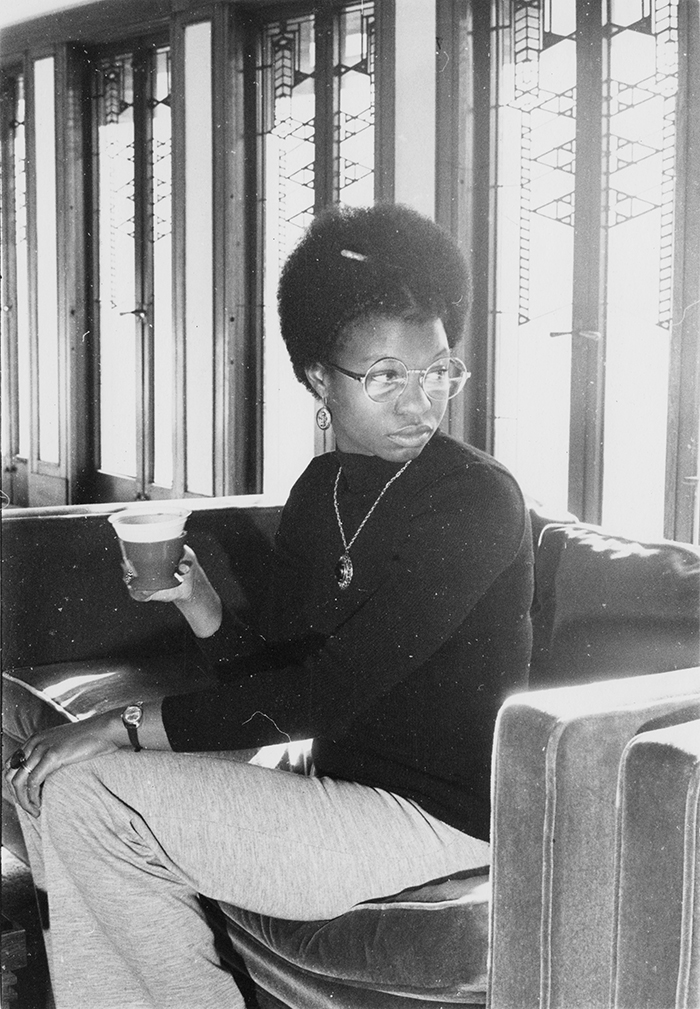
A student participates in a seminar at the Adlai E. Stevenson Institute of International Affairs, named for the former Illinois governor, two-time presidential candidate, and US ambassador to the United Nations. Based in Robie House from 1967 to 1975, the institute sponsored studies, lectures, and fellowships. Its first project in 1967 had to do with what it called a “brain drain” of talented people coming to the United States from other countries to pursue education or career opportunities. That first year it also sponsored 11 fellowships for students to undertake independent projects related to global policy. Did you participate in the institute’s programming? Share your memories at uchicago-magazine@uchicago.edu. (Photography by Leonard Lamberg, EX’75; Copyright 2025, The Chicago Maroon. All rights reserved. Reprinted with permission.)
A portrait of the artist as a young man
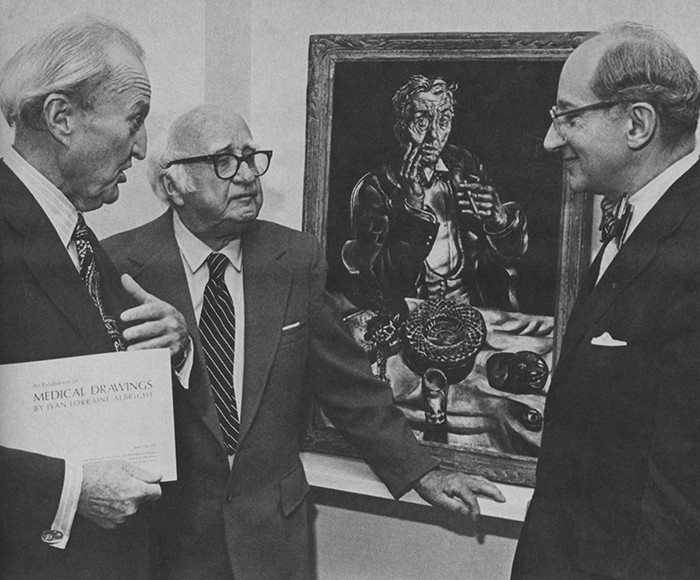
In 1972 William Benton, a University trustee and a US senator (D-CT), gifted his collection of Ivan Albright’s medical drawings to the University. Albright, often called a magic realist and known for his macabre portraits, made the series of watercolor illustrations while observing patients in Nantes, France, during his service as a private in World War I. “It was peel potatoes or dig ditches—or this,” Albright told this magazine in a 1972 interview. The watercolors were exhibited at the Renaissance Society’s gallery in Goodspeed Hall in 1972 with other pieces by Albright. From left: Benton, Albright, and University President Edward Levi, LAB’28, PhB’32, JD’35, stand in front of an early Albright self-portrait at the exhibit opening. Today the medical drawings are housed in the University’s Hanna Holborn Gray Special Collections Research Center and are digitally accessible (see mag.uchicago.edu/ivan-albright). (Photography by Lloyd Saunder)
Civil rights scholar
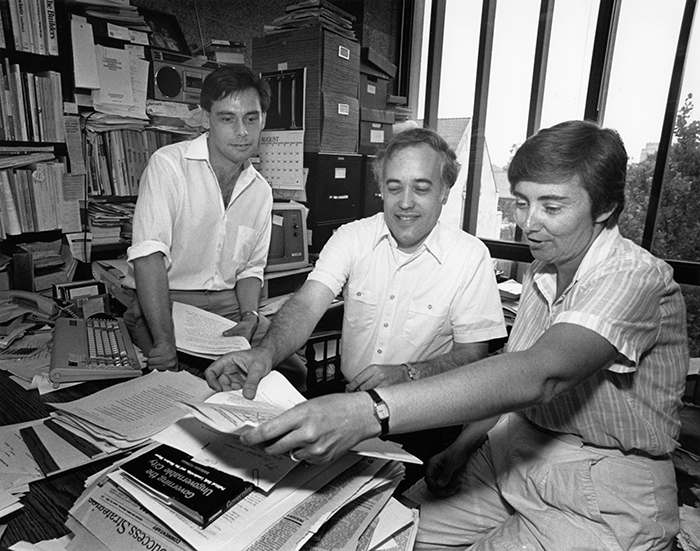
Gary Orfield, AM’65, PhD’68 (center), now distinguished research professor of education, law, political science, and urban planning at UCLA, is pictured here in in 1988 with graduate students Roland Calia, PhD’96 (left), and Susan Sanders, PhD’91. Orfield was a professor of political science at UChicago from 1982 to 1991. During that time he took advantage of increasingly accessible computer technology to access and analyze government education records, studying racial composition and segregation in public schools. He told this magazine in 1989, “A bureaucracy has incredible amounts of information, but there’s a great equalizer now which is that computing has become affordable for people without huge research budgets.” This direct access to information, he argued, “should be one of the key balances in a bureaucratic society.” In 1996 he cofounded Harvard’s Civil Rights Project, now the Civil Rights Project/Proyecto Derechos Civiles, housed at UCLA since 2007. Did you study with Orfield? Share your memories at uchicago-magazine@uchicago.edu. (Photography by Randy Tunnell, UChicago Photographic Archive, apf1-10692, Hanna Holborn Gray Special Collections Research Center, University of Chicago Library)
Muscle memory
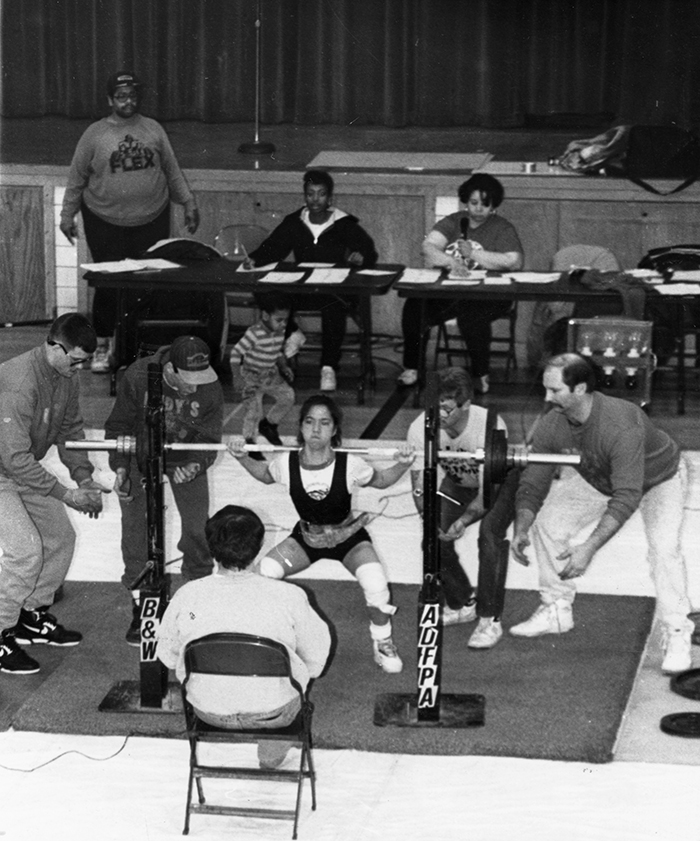
Laural Shiu-Yah “Laurie” Jin O’Dowd, AB’92, JD’97, then a College third-year and a member of the cheerleading squad, competes in her first collegiate powerlifting competition. Pictured accomplishing a 190-pound squat, Jin qualified for the 1991 Collegiate Nationals with a 475-pound combined total in the squat, bench press, and dead lift, and she received Best Woman Lifter honors. At Collegiate Nationals she won first place in her weight class with a 497-pound combined total. (Photography by Mike Mahoney, AB’91; Copyright 2025, The Chicago Maroon. All rights reserved. Reprinted with permission.)
See and be scene

In Winter Quarter 2010 Larry Norman, the Frank L. Sulzberger Distinguished Service Professor in Romance Languages and Literatures, Theater and Performance Studies, Fundamentals, and the College (front center), and students sit in on a Court Theatre rehearsal of Tony Kushner’s The Illusion, “freely adapted” from a play-within-a-play in Pierre Corneille’s 1636 L’Illusion comique. As part of the class Theatrical Illusion: Corneille, Kushner, and the Baroque, which Norman called a “smorgasbord of Baroque extravagancies,” students themselves also performed scenes from The Illusion and got feedback from Court’s artistic director Charles Newell. Did you study with Norman? Share your memories at uchicago-magazine@uchicago.edu.(Photography by Dan Dry)
Have photos from your UChicago days? The Magazine may be able to share them in Alumni News and in a future Snapshots. Send high-resolution scans and your memories of what the pictures are about to uchicago-magazine@uchicago.edu.
